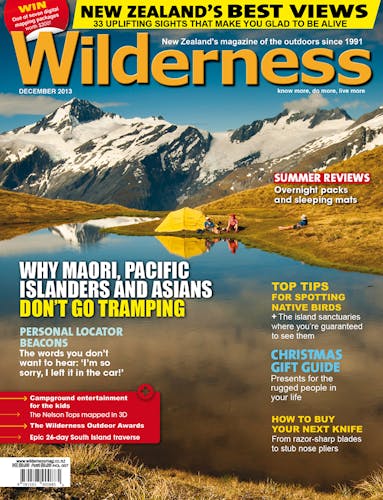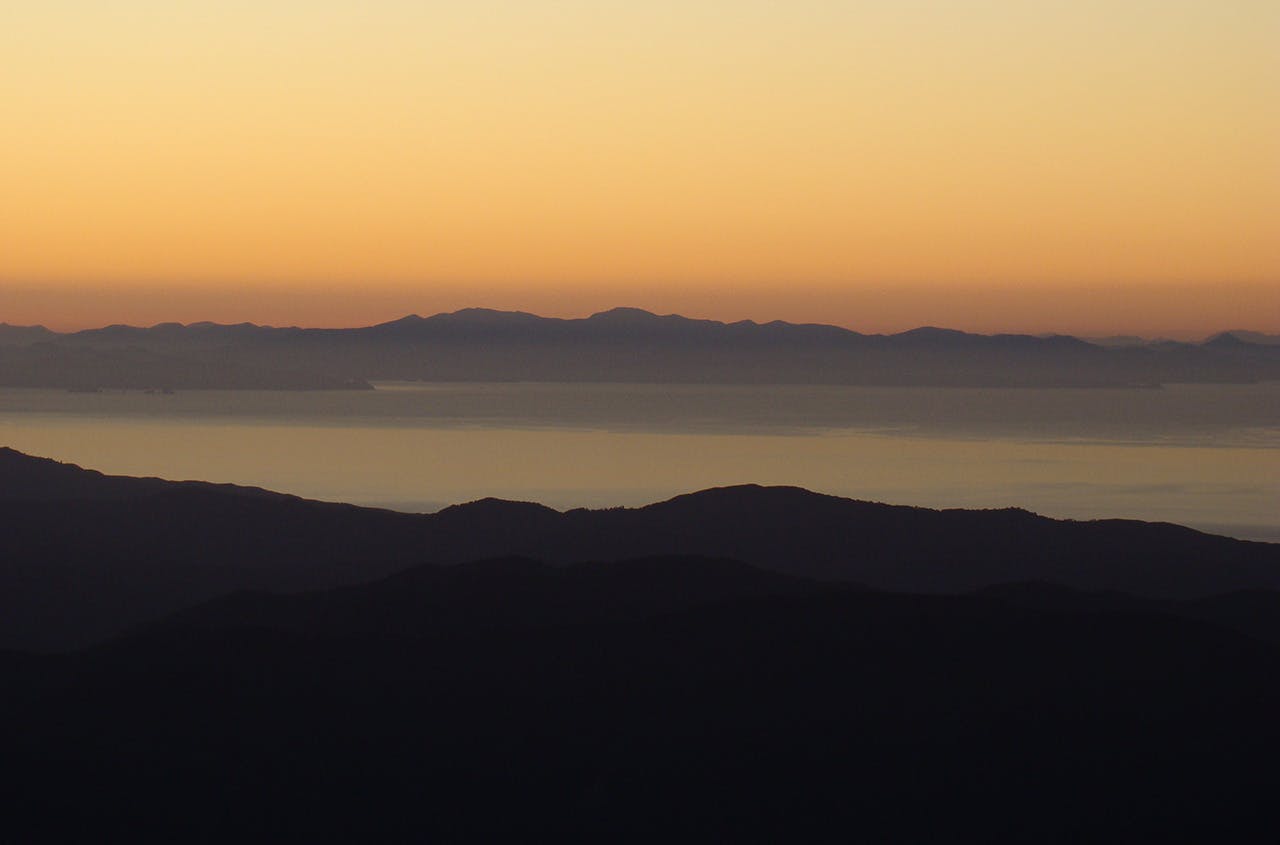Letter of the month
A grand mountain of the southern Tararuas
Our family have been reading Wilderness for quite a few years now and are always excited to see your articles on the Tararuas, our local playground.
Comparing Mt Hector to Ben Nevis was a master stroke and well appreciated. Although Mt Hector is not the tallest in the Tararuas – at 1571m Mitre is – it is satisfying to know we have a very accessible range that has many peaks higher than anything in the UK.
If I was to be pedantic, Mt Hector rates about eighth highest in the Tararuas but is out on its own and the highest at the southern end of the range, with all peaks higher than this close to Mitre in the mid parts of the range.
Having said that, it is still one of the most amazing places to be on a clear day or even with the cloud below you. You feel on top of the world, the view is to die for and you are always reluctant to move on. You can rotate a full 360-degrees, taking in Mt Ruapehu, Mt Taranaki, Levin, Kapiti Island and coast, down to Wellington, the South Island, the Rimutakas, Lake Wairarapa round to Carterton all from one spot.
Keep up the Tararau inclusions.
– Kevin van Soest, e-mail
– A few readers spotted our mistake in naming Hector the highest in the Tararua Range – major brain fade. But Kevin was first and even sent us a photo (above), so he wins our letter of the month prize – a lush merino wool sleeping bag liner $140) from www.fells.co.nz.
Dream not all it’s cracked up to be
I was one that was thought of as not having life experience when I left college and was turned down by OPC for this very reason (Outdoor education feature, September 2013).
Undeterred, I picked up the same outdoor course in the Wairarapa and passed the outdoor leadership course with flying colours. During the years after, I landed many jobs in the outdoors as well as completing another outdoor leadership diploma and scuba diving. I have ‘lived the dream’ for over six years, but there is unexpected cost.
Until you are in it, you are oblivious to the fact that most of the industry is saturated with people wanting to get a job in the outdoors. It becomes almost a fight to get the good spots. And if you are not prepared to travel around or out of the country, then it’s very tough indeed. You may have to start out as a volunteer just to get your foot in the door.
And life always throws you a curve ball. When my wife fell pregnant we could no longer afford to live in Auckland and I had to give up my dream job in the outdoors due to the seasonal nature of the work and earning around $34,000 a year. It just wasn’t viable.
I may have had to give up my dream job prematurely, but I am enthusiastic in living my next dream: family life.
– S.White, Pahiatua
Other valleys not threatened by monorail
A story in the Walkshorts section of the October issue states the Greenstone and Caples valleys could be under threat by Ngai Tahu if the Snowden Forest monorail gets the go ahead. However, I am not so sure that this is likely to happen after reading a recent article in the Christchurch Press by respected columnist Tahu Potiki.
What should be of greater concern is that DOC has given its blessing to the monorail, no doubt as a consequence of the partnerships it is now required to develop. Such support is likely to make it harder for the Minister of Conservation Nick Smith to decline the proposal.
Hopefully he will take into account the poor track record of the developer who ran into financial difficulties and was unable to complete the new township of Pegasus north of Christchurch.
The last thing we would want to see is a similar failure with the monorail if it ever gets under way.
– David Blunt, e-mail
Birds, not people, part of the landscape
Josh Gale should tilt his PC hat back a bit when he claims in his article ‘Finding their own way, together’ (November, 2013) that Tuhoe are ‘as much a part of Te Urewera as any species of bird’.
To enlighten Gale, all of New Zealand’s native birds have been around a long, long time. Some, like kiwi, kakapo, kokako, stitchbird and saddleback have links stretching back many tens of millions of years.
DNA evidence has Maori arriving a mere 700 years ago, a mere blink of an eye in our natural history.
If Gale thinks that Tuhoe somehow blend in with the forest the way our native birds do, they don’t. Sadly, Tuhoe and any other humans – recent invaders – have never matched it with the birds.
– Barry Dunnett, e-mail
Tourist says park tax a goer
I picked up a copy of October Wilderness while on holiday in New Zealand. I found myself agreeing with the 71 per cent of survey respondents who supported a park tax on foreign visitors, as reported in the Walkshorts article.
I’d be all too happy to pay a tramping tax, but how would it be enforced when from what I read there are already some problems around getting people to pay hut fees? I’ve got no easy answer.
If a fee is introduced, it would be nice to see some tangible evidence of it being put to good use.
I’ve trekked in Nepal, paying for the privilege. The highest fee I can recall was something like US$500 to get into the medieval walled city of Lo Manthang. The idea was to keep the area exclusive. But it was whispered abroad that the trekking fee went straight into somebody’s pocket.
Certainly I hear that nowadays the trail up to Everest is little short of a motorway. So much for the feeling of splendid isolation that really is the essence of trekking and tramping.
– Ed Peters, United Kingdom







